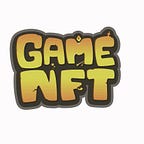It has been a whole month since Dungeon Economy was launched on 13th September. Thanks for all support and trust from the community! Hope you’ve been enjoying it and we are keeping optimizing it.
There are six eras in Dungeon Economy, please check below for more information.
1. Weapon Era
In weapon era, Dungeon Economy is a monster-based system, in this game, the “monster” is the gold in the dungeon, the “hero” is the miner, the “weapon” is the pickaxe, and “hunting and killing monsters” is mining!
As productivity increased, the island fed more people, and in turn, people contributed to a more diversified economy. Some newly arrived immigrants found jobs in operating giant monster traps, and others borrowed excess monsters from the aborigines to open up businesses. People finally didn’t have to eat monsters every day, and some of them enter other business fields by loan. The diversified economy of dungeon has given birth to many occupations, such as shack builders and ground diggers etc.
2. Occupation Era
With the development of dungeon economy, products export ability increased. Soon, many large freight vehicles drove into the dungeon full of monsters, costumes, armor, and weapons. These products enjoy a high reputation throughout the dungeon due to high quality and reasonable price. People used them to exchange for fresh monsters and other commodities that had never been seen in the dungeon before.
3. Trade Era
Because there was no organized and orderly common defense group in the dungeon, thieves sometimes came in groups to seal monsters, rampaged in the dungeon, and the heroes were miserable. From time to time, humans on the ground also invaded the dungeon. They were not only excellent drummers, but also fierce robbers. Once they showed their power, there would be no more monsters left in the dungeon.
Obviously, heroes needed to unite and jointly maintain their own safety. They needed leaders, but surrendering power was always a risk. Once people have power, they often abuse it. In order to protect the dungeon from foreign enemies, the Senate decided to establish and supervise an army composed of heroes equipped with legendary blades.
4. War Era
The banks wanted to find a safe project, and finally they focused on the sleeping shed loan market in the dungeon, believing that it was an ideal target for low-risk loans.
5. Real Estate era
In the overall economic picture of the dungeon, the sheds market has never gained a prominent position before. The sheds fits hero’s way of life very well, simple and plain. However, due to economic prosperity and lower interest rates, people began to need newer, larger, and more beautiful sheds. In the past, heroes needed to save monsters for many years, and then took out a large number of monsters at once to buy a shed. Later, banks began to provide sheds loans to people with better reputations in the dungeon. With a loan, even if the borrowers’ current savings are lower than the price of the shed, they can still afford the sheds as well and don’t have to wait any longer.
6. Financial Era
The profit rate of mining is not only related to the weapons of the first era, but also related to the choice of career in the second era, and the choice of career will also affect the income method of the third era. The subsequent modules of trade, war, real estate, finance, etc. are linked together, which also enables retail investors to narrow the gap with the big and professional investors through technology and luck, and thus have more fun. It’s 2021 now! Time to own a virtual wealth by your own!
The dungeon NFT economic model comes from the economics book “Dungeon Economics” of the same name. This is a unique and fascinating book on economics. Starting from the dungeon, the original esoteric economic principles are vividly reflected in each story. As the story goes on, thinking about it layer by layer, you will find that although some economic principles seem to get deeper and deeper, they are always close to our reality and always full of fun.
The author advocates a free economy and no excessive interference in the market. He does not advocate quantitative easing to “print money” and he believes that currency needs to increase in value, commodities need to be continuously devalued, and only the continuous rising of purchasing power of currency can bring people a truly high-quality life.
